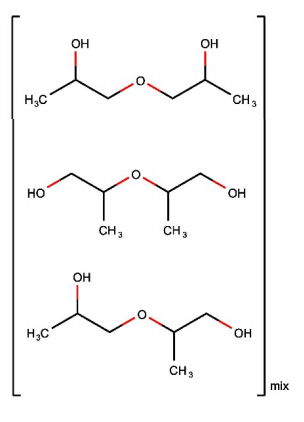What is Di Propylene Glycol?
Di propylene glycol (also known as oyybispropanol, 2,2-dihydroxyisopropylether, 1,1-oxydipropane-2-ol, di-1,2-propylene glycol, and DPG) is a clear, colourless, viscous liquid with a characteristic odour and the formula C6H14O3. It is fully miscible in water and is also miscible with many organic solvents. This solvency, combined with low toxicity and a low evaporation rate, makes DPG a chemical which is a very useful reactive intermediate in a range of industries.

How is it produced?
Di propylene glycol is produced as a byproduct of propylene glycol production which occurs in a propylene oxide hydrolysis process. Tri propylene glycol is another by-product of this process.
It is estimated that the worldwide capacity for di propylene glycol production is approximately 107,000 tonnes per annum.
How is it stored and distributed?
Di propylene glycol is generally stored and distributed in stainless steel, aluminium or lined tank cars, tank trucks, or drums. It has a flash point of 124 °C (closed cup) and a specific gravity of 1.023 and is not classified as dangerous for any mode of transport.
What is Di Propylene Glycol used for?
Di propylene glycol finds use as a chemical intermediate across a range of industries. It is used as a component in the production of high volume plasticiser and, indeed, 38% of DPG is consumed in this process. It is also an initiator in urethane polyols, and a reactant in unsaturated polyurethane resins where it adds flexibility and hydrolytic stability. It is also used for cutting oils, in hydraulic brake fluid production, and is a solvent for agricultural chemicals such as insecticides. It is also used as a solvent for printing inks, nitrocellulose, cellulose acetate, lacquers and coatings. It is an ingredient in industrial soaps and also has a role in the refining industry where it is used as an extraction solvent to extract aromatics.
There is also a Fragrance Grade of di propylene glycol which is used in the cosmetics industry where it is an additive in perfumes, and in skin and hair care products, where it binds and carries the fragrance elements of the perfume being used.



